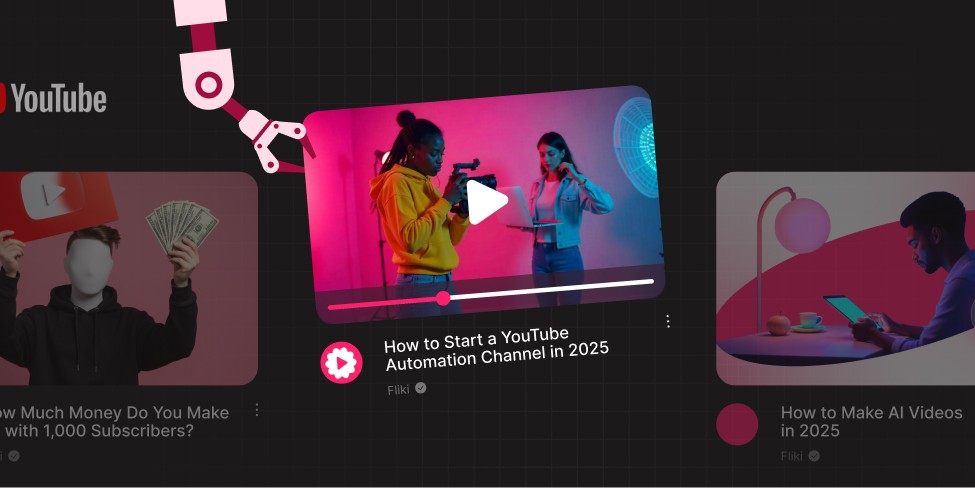Introduction
YouTube Shorts have taken the world by storm, and if you're a content creator looking to get in on the action, you've probably asked yourself: how can I actually make money from these bite-sized videos? With more YouTube shorts creators vying for attention than ever, understanding YouTube Shorts monetization is crucial for standing out and making your channel profitable.
In this guide, I’m going to walk you through everything you need to know about monetizing YouTube Shorts, from the requirements to the potential earnings and the best practices to follow. We’ll also touch on the difference between Shorts and regular YouTube videos—which can help you decide which format best suits your content goals. So, grab a cup of coffee, and let’s dive in!

What Is the Difference Between YouTube Shorts and YouTube Videos?
If you’re new to YouTube Shorts, you might be wondering what sets Shorts apart from traditional YouTube videos. At a glance, they may just look like shorter content, but there’s more nuance to it than that.
Duration: YouTube Shorts are brief, punchy videos that are 3 minutes or less. On the other hand, traditional YouTube videos can range from just a few seconds to multiple hours, offering a lot more flexibility in storytelling.
3 min YouTube Shorts — What you need to know! ⬆️ You can start uploading 3 min Shorts NOW 🚨 They won't show up as Shorts right away... 📲 3 min Shorts should start showing up in the feed within a week 👖 It'll take longer for them to show up as Shorts across every part of…
— YouTube Liaison (@YouTubeLiaison) October 15, 2024
Format: Unlike the usual horizontal format of traditional videos, YouTube Shorts are designed for vertical viewing, specifically optimized for mobile. This makes them highly accessible for those endless scrolling sessions.
Discoverability: YouTube Shorts benefit from a dedicated “Shorts player” and have prominent placement on the YouTube homepage. This means they get a boost in discoverability compared to traditional videos, which are competing for space in the search feed and subscription lists.
Audience Engagement: When it comes to engagement, Shorts are more about quick, trendy content. This makes them perfect for reaching new audiences fast and encouraging likes, shares, and comments. Traditional YouTube videos, on the other hand, are better for those deep-dives that build a lasting connection with your audience.
Do YouTube Shorts Get More Views than Traditional Videos?
If you’re focused on getting those view counts up, YouTube Shorts might just be your ticket. Shorts have distinct discoverability advantages, thanks to the dedicated “Shorts shelf” on YouTube’s homepage. They’re tailor-made for viewers with short attention spans—which is a big part of why YouTube shorts get more views than longer-form videos.
Algorithmic Prioritization: YouTube is actively competing with platforms like TikTok, which means their algorithm gives Shorts a nice little push. If you’re looking for a way to gain more exposure, consistently posting engaging Shorts can work wonders.
Engagement Metrics: With their fast-paced format, Shorts are optimized for quick engagement. People love to hit like or share after watching a catchy, 15-second clip—even if they’re less likely to leave a comment. This kind of interaction boosts your visibility, especially if you’re chasing virality. Checkout the crazy count of views the following YouTube shorts creator got on their shorts:

How Can You Earn Money from YouTube Shorts?
Now let’s talk about the juicy stuff—money. Yes, you can make decent amount of money with YouTube Shorts, but it’s a bit different compared to traditional YouTube monetization. Here’s how it works:
Shorts Monetization Requirements: To monetize YouTube Shorts, you need to join the YouTube Partner Program (YPP). The requirements are a bit challenging: you need 1,000 subscribers, along with either 10 million YouTube Shorts views in the last 90 days or 4,000 watch hours on your long-form content in the past year. So, yes, it’s achievable—but it’ll take some hustle!
💵 today is THE day!! all YPP creators who make Shorts & have accepted the new program terms are now eligible for Shorts ads rev sharing 🌟 reminder: creators w/ >1k subs + 10M eligible Shorts views in the past 90 days can apply to YPP 🎊 all the deets: https://t.co/xSBqSnevClpic.twitter.com/aMvATeOkF4
— TeamYouTube (@TeamYouTube) February 1, 2023
Revenue from Ads: YouTube Shorts use a revenue-sharing model for ads. Basically, YouTube sells ads that play between Shorts, and the ad revenue is pooled together. From this pool, creators receive 45% of the revenue, while the remaining 55% goes to YouTube—after covering the costs of music licensing if music is used in the Shorts.
Other YouTube Shorts Monetization Methods: Beyond ad revenue, you can monetize YouTube Shorts by partnering with brands, using affiliate links, or promoting your own products. YouTube is constantly evolving, and these methods are a great way to diversify your earnings.
Best Practices for Monetizing YouTube Shorts
Want to maximize your earnings? Here are some tried-and-true strategies for growing your Shorts channel and boosting your monetization potential:
Consistent Content: As with anything online, consistency is key. If you want to be successful on YouTube Shorts, you need to keep uploading regularly. The more you upload, the more likely it is that you’ll have a viral hit.
Catchy Thumbnails & Titles: Though Shorts are often viewed in the feed, catchy titles and thumbnails can make a big difference in how your content performs. Don’t skimp on this—a little effort here can go a long way in grabbing attention.
Leverage Trends: YouTube Shorts thrive on trending sounds, themes, and memes. Pay attention to what’s popular and find ways to leverage these trends into your own unique content.
Optimize for Engagement: The YouTube algorithm loves engagement. Encouraging your viewers to hit that like button, drop a comment, or share the video will all help push your content further up the Shorts feed.
💡 Learn why sometimes your YouTube Shorts stop getting views?
How Does YouTube Shorts Monetization Work Behind the Scenes?
To truly understand how to maximize your YouTube earnings, it’s helpful to look at how the revenue sharing process works for YouTube Shorts. Here’s a breakdown:
Ad Sales: YouTube sells ad space to companies, which then run ads between Shorts.
Revenue Pooling: All the ad revenue generated from these ads gets pooled together.
Creator Pool Allocation: YouTube takes a portion of this pooled revenue to pay creators, while also covering music licensing costs. If your Short doesn’t use music, more revenue gets allocated to you.
Revenue Split: Of the amount allocated to creators, you get 45%, regardless of whether your Shorts use music. YouTube retains the other 55%.
Earnings Potential: How Many Views Do You Need?
If you’re wondering how much you can actually make from YouTube Shorts, it’s important to note that the RPM (revenue per mille, or per 1,000 views) is relatively low. Creators in the YouTube Partner Program typically earn between $0.01 to $0.07 per 1,000 views, which means to make $100, you’ll need anywhere from 1 to 2 million views. Learn how much money do you make on YouTube with 1000 subscribers.
It’s not impossible, but it certainly requires a viral moment or two. Many successful creators use Shorts as a way to drive growth to their main channel, where they can earn more money from traditional long-form videos.
💡 Learn how to make YouTube shorts go viral in 2025.
Other Ways to Monetize YouTube Shorts
If you’re creative, you can find lots of ways to monetize your Shorts content. Here are five additional options:
Sell Subscription Memberships: Offer exclusive perks to your biggest fans through YouTube memberships.
Live Streaming: Once you’ve grown your audience, use live streams to engage with fans and collect donations through Super Chat and Super Stickers.
Sell Merchandise: Use platforms like Teespring to create and sell your own branded merchandise.
Affiliate Marketing: Promote products in your Shorts, and include affiliate links to earn commissions on any sales.
Paid Brand Partnerships: Partner with brands for sponsored content that fits within your niche—this can be a great way to earn more from your most-viewed Shorts.
Things to Do Before You Start Monetizing YouTube Shorts
Before you start cashing in on your Shorts, make sure you’ve followed these steps:
Join the YouTube Partner Program (YPP): Make sure you meet the eligibility requirements (1,000 subscribers and sufficient watch hours or Shorts views) to enroll in the YouTube Partner Program (YPP).
Accept the Shorts Monetization Module: Accepting the Shorts Monetization module is crucial for actually making money from Shorts ad revenue—don’t skip this step.
Check YouTube Studio Analytics: Use YouTube Studio Analytics to track your progress and see how much ad revenue your Shorts are generating.
Final Thoughts: Is YouTube Shorts Monetization Worth It?
Making money from YouTube Shorts is definitely possible, but it’s important to keep your expectations realistic. While the payout per view might be low, Shorts are an incredible way to grow your audience quickly. By using a mix of ad revenue, brand deals, affiliate links, and other methods, you can turn your Shorts channel into a profitable venture—as long as you’re willing to put in the work.
So, what are you waiting for? Grab your smartphone, start creating, and see if you can use this exciting opportunity to monetize your content and grow your YouTube channel!



